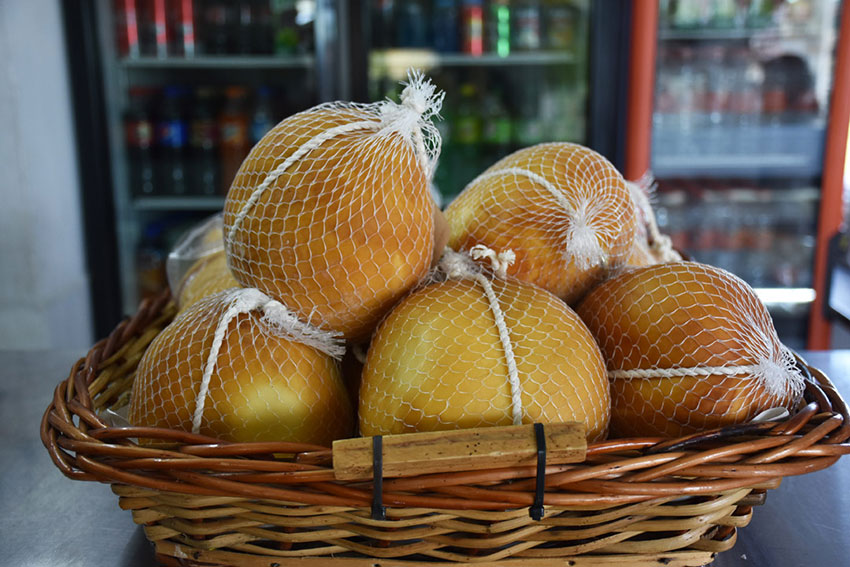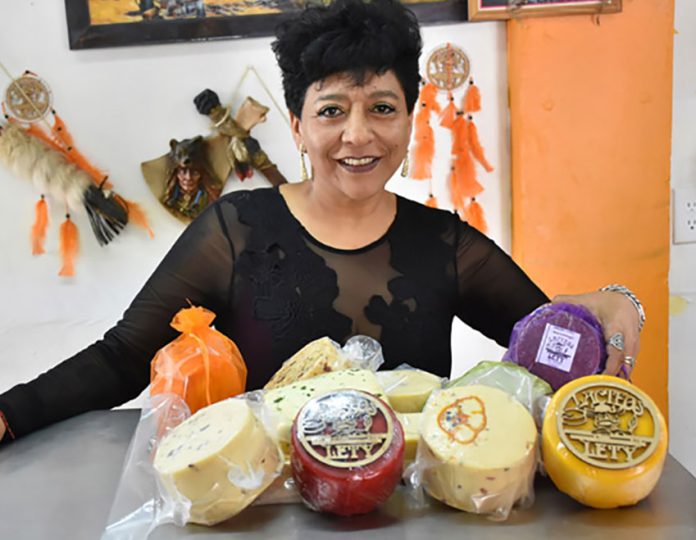San Cristóbal Poxtla is a small pueblo with a population of a little under 1,000 but despite its size it is known throughout Mexico as as one of the best producers of artisanal cheeses.
In fact, it’s called “La Gran Fábrica de Quesos” — the Great Cheese Factory — and the majority of its residents are employed in dairies or in cheese shops.
Poxtla, as it’s commonly called, is located in the state of México, about an hour south of Mexico City, and is surrounded by fields of corn and, of course, cows. Although it’s a bit of a trek from the city, it’s worth the effort to get there and sample its cheeses.
Cattle were first brought to Mexico by the Spanish, specifically by Gregorio de Billalobos in 1521, about six months before the fall of Tenochtitlán, the Aztec capital. For many years, cattle were considered a source of meat, not milk or cheese.
That began to change in the late 1800s as new breeds of cows were introduced, ones that increased milk production. But dairies still tended to be small scale operations. It wasn’t until the 1990s that the dairy industry expanded and large scale production began. Mexico now ranks 10th in the world for cheese production and around 40% of that production is from small-scale dairies and cheesemakers, like the kinds found in Poxtla.

Leticia Herrera Guerrero, the owner of Lacteos Artesanales Lety, stands behind the counter in her shop and places a selection of cheeses in front of her. “Queso Oaxaca and panela, which are fresh cheeses, are the most popular,” she said as she pointed out the cheeses.
“This is partly because they are less expensive than other cheeses and also because they are both used daily in cooking and in foods like quesadillas.”
Another product is manchego, a matured cheese that is popular because of its flavor.
Manchego originated in the Spanish area of La Mancha and was brought to Mexico by the Spanish. Although both countries call this cheese manchego, in Spain the cheese is made from sheep’s milk but in Mexico cow’s milk is used. This led to a disagreement a few years ago between Spanish and Mexican cheesemakers which dragged on for over two years. Because of the differences, the Spanish wanted Mexico to stop calling their cheese manchego. The dispute was finally settled in 2018 with an agreement that stipulates that Mexican manchego must be labeled as a domestic cheese.
Clearly, cheesemakers take their products seriously but, personally, I’m glad that Mexico’s cheesemakers still make manchego.
A simple, plain manchego has a mild, somewhat nutty taste and, in my experience, is also good for making quesadillas. But cheese shops in Poxtla aren’t happy with only offering a plain manchego. Herrera’s store carries 16 varieties of the cheese.

“We have manchego made with tequila, red wine, several with different types of chiles, others with herbs, and even walnuts when they are in season,” said Juan Cruz, who works at Lacteos Lety. There’s even one known as Por Salud (For Health) that’s higher in protein and often eaten when a person’s feeling sick.
Herrera is happy to give customers a taste of any number of the different cheeses and manchegos and it’s simply not possible to walk out of the shop without several varieties. I left with a half kilo of Queso Oaxaca, some smoked provolone, two types of manchego (herb and wine) and tortillas made with chipotle chiles. There are tables and benches at the side of the store where you can relax and enjoy a snack before driving home.
In addition to offering samples, Herrera also offers advice about how to eat her cheeses.
“Manchego,” she said, “is best eaten with a little red wine.” I took her advice when I got home.
Joseph Sorrentino is a frequent contributor to Mexico News Daily and lives in San Gregorio, Xochimilco.
